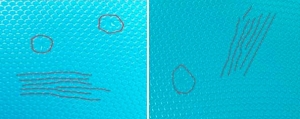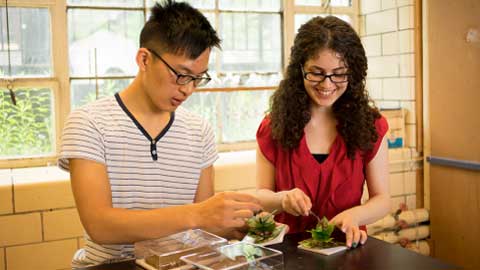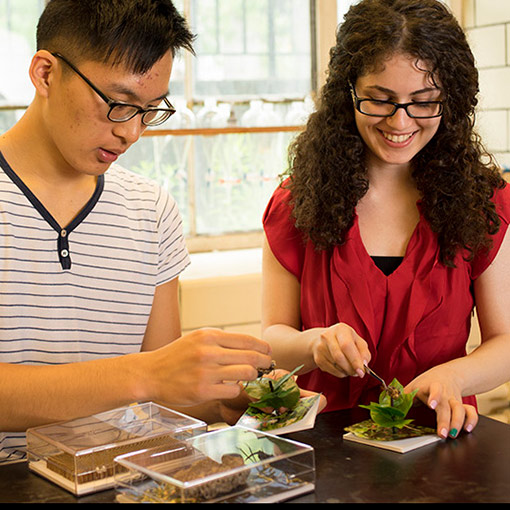
What do soap bubbles and grasshoppers have in common? As it turns out, they can both be used to help students learn about modern materials and their engineering applications.
This summer, Dr. Scott Ramsay and Professor Uwe Erb (both MSE) each led an undergraduate student team from the Department of Materials Science & Engineering (MSE). Students teamed up to develop new educational kits that will help fellow students learn introductory engineering concepts.
The first group worked with Ramsay on a project called Materials One as part of the engineering course, MSE101. They collaborated on new methods to help first-year students grasp challenging concepts in materials science. The other group, part of the nanOntario outreach program led by Erb, developed instructional kits for high school students.
“The concepts we teach in materials engineering are often new to our students and can be challenging to grasp,” said Ramsay. “There isn’t really an equivalent prerequisite course at the Ontario secondary school level. That’s why we have students come up with educational aids – to facilitate learning at a level that speaks to other students. And, it’s really a lot of fun for everyone.”
Take a look at the two groups that came up with fun – and sometimes sticky – learning activities.
Materials One

Undergraduate students Anastasia Alksnis (MSE 1T6), Roberto Aurilio (MSE 1T5), Daniel Levitt (MSE 1T7), and Xiaoji (Iris) Zhang (MSE 1T5) developed a series of hands-on activities and learning aids that complement MSE 101 – the first-year materials science and engineering course offered across the Faculty.
One of the activities the group came up with asks students to blow soap bubbles onto a flat surface forming a so-called ‘bubble raft.’ Developed in the late 1940s, this technique was first used by researchers to model atoms in solids. Now reimagined for MSE 101, students will be challenged to take photos of their bubble rafts, which show the best examples of various microstructural features – features that contribute to materials properties and performance.
“Working on the Materials One project was a great way for me to reinforce what I had learned in MSE 101,” said Levitt, whose group was supported by the Faculty’s Engineering Instructional Innovation Program. “I hope our efforts will help future students engage with the curriculum and build a solid foundation for their upper year studies.”
Watch Dr. Scott Ramsay perform the elephant toothpaste experiment at a local elementary school, illustrating catalyzed decomposition of hydrogen peroxide – an experiment prepared by Materials One project student Xiaoji (Iris) Zhang.

nanOntario
Now in its fifth year, nanOntario is a youth outreach program led by Professor Uwe Erb (MSE) aimed at educating secondary school students about bio-inspired nanotechnology found in Ontario’s outdoors.
Tasked with designing instructional kits to facilitate the course, undergraduates must think deeply about materials science subjects in order to best deliver the information. In this way, the learning is two-fold, as both high school and university-level participants benefit from the course.
This year’s theme was “Hexagonal Structures”. Participants investigated the prevalence of six-sided surface structures in nature, and how humans have mimicked these shapes to enhance technologies.
For example, katydids – an insect similar to the grasshopper – have hexagonal micro-patterns on their legs that help them attach to surfaces when jumping from place to place. A similar pattern can be found in certain winter tires to improve traction for driving safely in slippery conditions.
Partnered with Hitachi High-Technologies Canada (HHTC), participants of the course have access to a portable scanning electron microscope that enable discovery at the atomic level, including a close-up look at the surface structure of insect legs.

“As students shift more of their studies towards the use of online materials, one of the best functions of classroom and tutorial time is to make use of demonstrations and hands on activities to facilitate different modes of learning,” said Professor Jun Nogami, Chair of the Department of Materials Science & Engineering. “The ideal way to develop these new teaching materials is to involve students in their development from the very beginning.”




